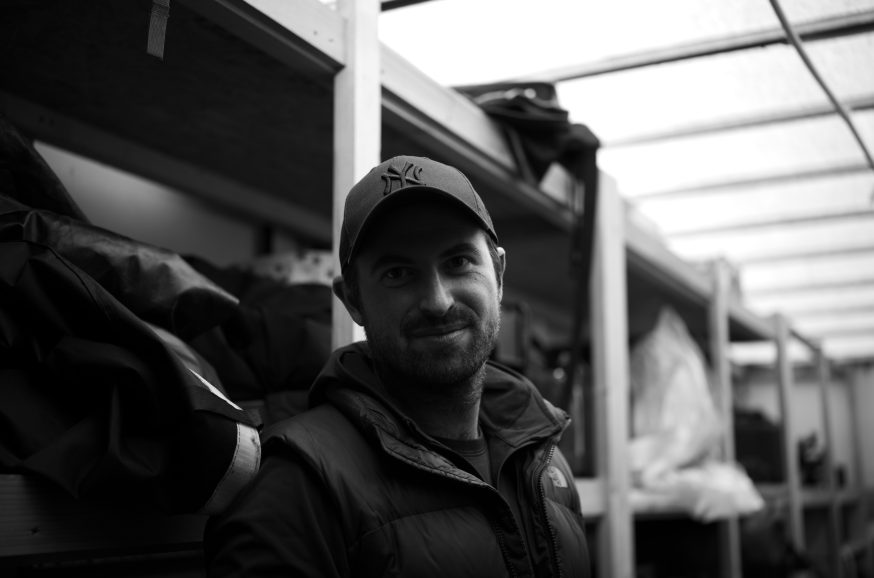MATCH MADE IN HEAVEN
To help Wedding Season’s viewers navigate the show’s non-linear timelines, choosing the right glass for the challenge was pivotal for cinematographer Adam Etherington BSC.
Wedding Season is a high-octane comedy with a rip-roaring narrative that accelerates straight out of the blocks. It was a show I felt we could do something adventurous and fun with cinematically. It offered an opportunity to collaborate with Dan Kay, a producer I greatly admired, director George Kane and an exciting young cast. It also fulfilled a lifelong ambition to work with Disney.
Our collective ambition was to create a high-calibre aesthetic with colour and energy that supported the relentless pace of the story. We needed to also help the audience navigate as the story moved between present-day and flashback non-linear timelines.

Our idea was to adopt a classical, romanticised S35mm lensing for the flashbacks and then use a more modern full frame lensing strategy for the present-day scenes. The flashbacks were to be omniscient, classical, and graceful in movement, with the present-day work being more visceral, sharper, and more immediate and reactive.
We tested both the ARRI ALEXA Mini LF and Sony Venice and felt the LF sensor’s larger photosites, combined with the flattering rendition of skin tones and softer highlight roll-off, were perfect for our story.
For each timeline in the show, we selected a different lens series. For flashbacks, we selected TLS Cooke Speed Panchros with their beautiful, 1940s-50s 35mm aesthetic. Traditionally seen as a romantic lens series, Panchros have a delicate focus roll-off, with subtle, nuanced flare and sympathetic rendering. While being characterful, they also retain fantastic optical performance.
We worked as much as possible from 40mm and up within the set, utilising the stunning bokeh. This enabled us to create layered, textural images with refractions in the foreground to complement the painterly overall feel to the lens’ rendering.

Favouring longer focal lengths allowed us to create a ‘window on a moment’ for the viewer. For the flashbacks we moved the camera in studio mode or on Steadicam, to create a precise, observational feeling of omniscience that reflected the pre-determination of the characters’ journeys.
To lens the present-day scenes in a markedly different way, we wanted lenses with a much larger image circle of projection that essentially covered full frame, to utilise the whole width of the ALEXA LF Mini sensor.
After testing several options, the TLS rehoused Canon K35s and FDs were a standout choice. K35s retain the nuanced aesthetic of vintage optics, whilst delivering a cleaner image rendition and comparatively higher resolution of projection across the sensor, especially when stopped down.

Our strategy for the present-day scenes was to use wider focal lengths, primarily 28mm and down, so we needed more than just the limited range of the K35s. We supplemented the set with additional focal lengths of Canon SSC FDs. These are stills lenses made by Canon in the same era as the K35s, with almost indistinguishable coatings and at times near identical optical design and performance.
We wanted to try to use the different fields of view offered by the ALEXA LF Mini sensor, as well as our lens choices, to create two distinctly different visual approaches. In creative terms, the impact of a wider angle of view is that the feeling of perspective created by a person or object’s relative position to the lens is heightened. Images often appear ‘three-dimensional’, with greater rectilinear distortion (depending on the lens) and shift in perspective as a subject or camera moves. Therefore, a relatively small change in position between artist and camera can have a dramatic effect on screen and become a powerful creative tool.
A beautiful example of the idea in practice is in Emmanuel Lubezki ASC AMC’s stunning work on The Revenant, which I believe was partially shot using the ALEXA 65. The way Lubezki used wide lenses created a unique look, especially for camera movement, and a powerful connection to the characters.

Our idea for Wedding Season was to utilise an – arguably less extreme – version of this approach, to create two different looks and feels for our timelines. We originated on the ALEXA LF Mini, switching resolutions and lenses between each timeline. This utilised a different portion of the sensor, altering the relative field of view of each lens. The K35s covered the full image sensor, whereas the Panchros would only cover a S35mm sized portion of the frame as they had a much smaller image circle. This meant the field of view captured for each focal length would be noticeably different. As a result, the way the image would look and feel as the camera moved, and the way the audience would feel perspective change and axis shift, would be markedly different.
We further enhanced this separation by shooting at different stops for each of the timelines. We shot the K35s at around T4½, and the Speed Panchros almost wide open at around T2½. This created a difference in the depth of field, as well as the relative performance of each optic, which further accentuated each lens series’ inherent characteristics.

Our testing for Wedding Season was less scientific than other tests I’ve done in the past as it was very much about comparative feel. Generally, when testing, I look specifically at the way that the lenses handle contrast, roll-off, skin tone rendition, flare, veiling, consistency of colour within the range, any imperfections and aberrations, the shape and texture of the bokeh, extreme contrast, highlights and shadows, image sharpness and projection, as well as the resolution of projection across the sensor.
All that said, testing is just about getting to know a lens. Understanding what the image it renders looks and feels like in different situations, and how it reacts to light and movement. Lenses are our partners in storytelling, and the better we get to know them, the more creatively we can use them.











